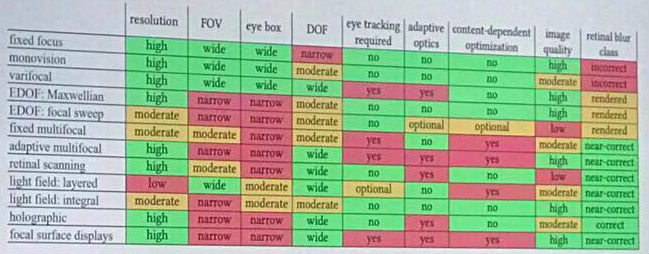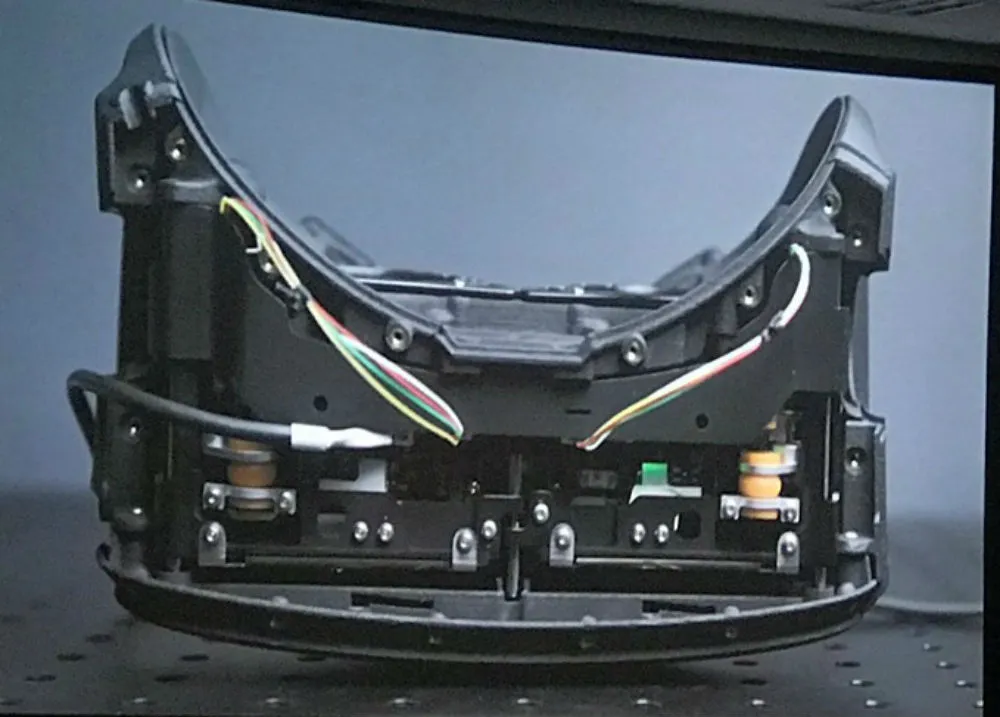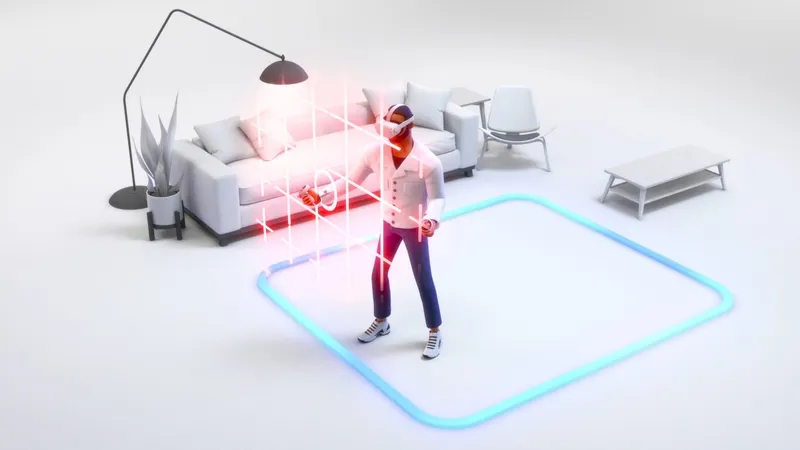At Display Week in Los Angeles Facebook revealed why its researchers and engineers built a varifocal VR headset.
Over the last few years researchers at Facebook’s Reality Labs (formerly known as Oculus Research) developed a series of prototypes designed to solve a fundamental problem facing current VR headset design. The event opened Tuesday with a keynote by Douglas Lanman, who leads the Computational Imaging Team at FRL which developed the prototypes in partnership with eye tracking systems developed by Rob Cavin and Alex Fix as well as wide-field-of-view optics developed by a team led by Jacques Gollier.
The work was first revealed as the Half Dome prototype at Facebook’s recent developer conference, but the presentation during Display Week went much deeper as part of a symposium put together by the world’s preeminent researchers and engineers in display technology. Lanman used the event to explain how and why Facebook engineered this system with moving displays over multiple generations. It started with a loud monstrosity but was eventually engineered into what we see in Half Dome.
The headset actually moves the displays to match the positioning of your eyeballs, and could help with the vergence-accommodation conflict plaguing VR headsets today. In virtually all consumer VR headsets, the lenses make your eyes focus far away. When objects appear near, there’s a conflict in where the lenses of the headset are focusing your eyes and where they naturally wants to focus. This can cause eyestrain and limits how long some people want to wear a headset.
Here’s how Lanman described the issue in an interview with UploadVR:
“Nearly all consumer HMDs present a single fixed focus. Some have focus knobs, but most just lock the optical focus of the displays to something around two meters. When you look at a near object, vergence (eye rotation) and accommodation (deformation of the eye’s crystalline lens) move together. As your lens deforms to focus on a nearby virtual object, it is focusing away from the fixed focus of the HMD. So, most people report seeing some blur. Sustained vergence-accommodation conflict has been linked, in prior vision science publications, to visual fatigue, including eye strain.”
Exploring the kinds of displays to solve this problem is a “daunting engineering challenge,” according to Lanman, so the “science community is only beginning to investigate.”
“In terms of visual clarity of near objects, varifocal displays have proven beneficial in our experience, as well as according to prior publications,” Lanman said.
In our interview, Lanman offered the first hint of what it feels like to try the Half Dome system.
“In a quiet room I don’t hear the screens or feel them moving,” Lanman said. “These are still feature prototypes, so the engineering isn’t completely perfected.”
An Oculus spokesperson declined to say when developers or journalists might be able to test the system. (Oculus has in the past presented new dev kits for testing at its developer conference late in the year.)
“We may never see these specific technologies in a product,” spokesman Brandon Boone wrote in an email. “Not ruling it out forever, but for now, we aren’t showcasing it any further than we currently have.”
Why Varifocal VR Matters

Virtual worlds that keep everything at a distance already look great and Half Dome’s moving displays wouldn’t do much to improve that, as Lanman explains. But experiences that have lots of interactions within arms reach (like many of the best VR experiences) could be made to appear way more detailed (less blurry) with a varifocal display helping to naturally focus your eyes in the near field. Lanman notes, however, some readers over the age of about 45 may not have “noticed an issue with clarity of near objects.”
“This may be due to the viewer beginning to experience presbyopia,” Lanman said. “Wherein they can no longer focus on close objects without the aid of bifocals, trifocals, progressives, or some other augmentation.”
The work presented this week by Facebook Reality Labs joins other major advancements, like an 18.1 megapixel display developed by LG and Google that could one day make it harder to distinguish real from virtual in a headset. Japan Display Inc. and Samsung also presented super high resolution displays tuned for VR. Taken altogether, the work makes clear that some of the world’s largest technology companies remain committed to developing much better VR headsets.
Lanman said his career is “driven by the goal of making displays indistinguishable from reality.”
“With AR/VR, I believe there is a unique opportunity to make a beyond-theatrical experience, where expansive views, close objects, and interaction are all possible,” Lanman said. “With this, I expect AR/AR will evolve to realize an infinite canvas for unlimited stories.”
Also be sure to read the Oculus blog post about their Half Dome efforts.




























